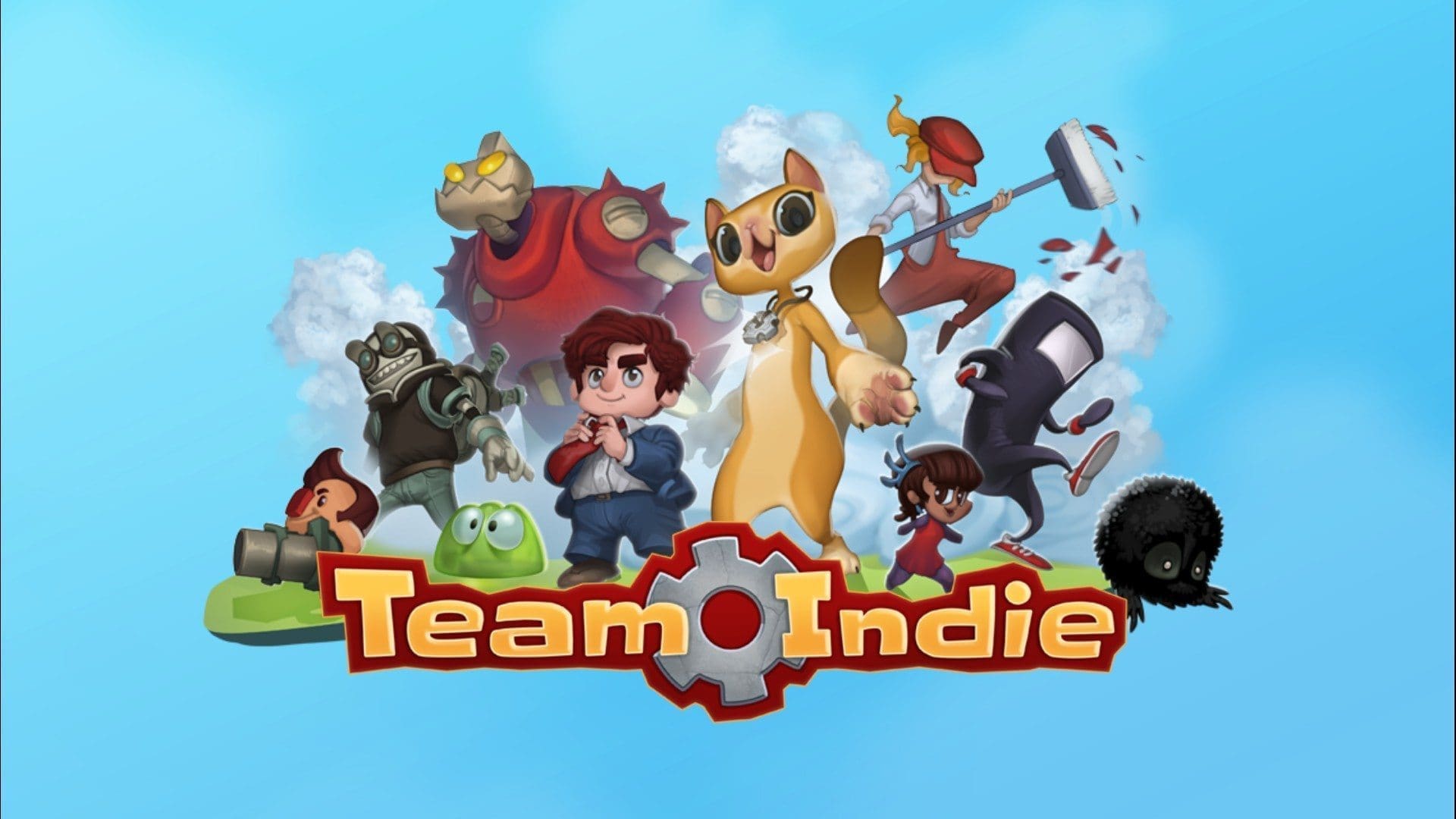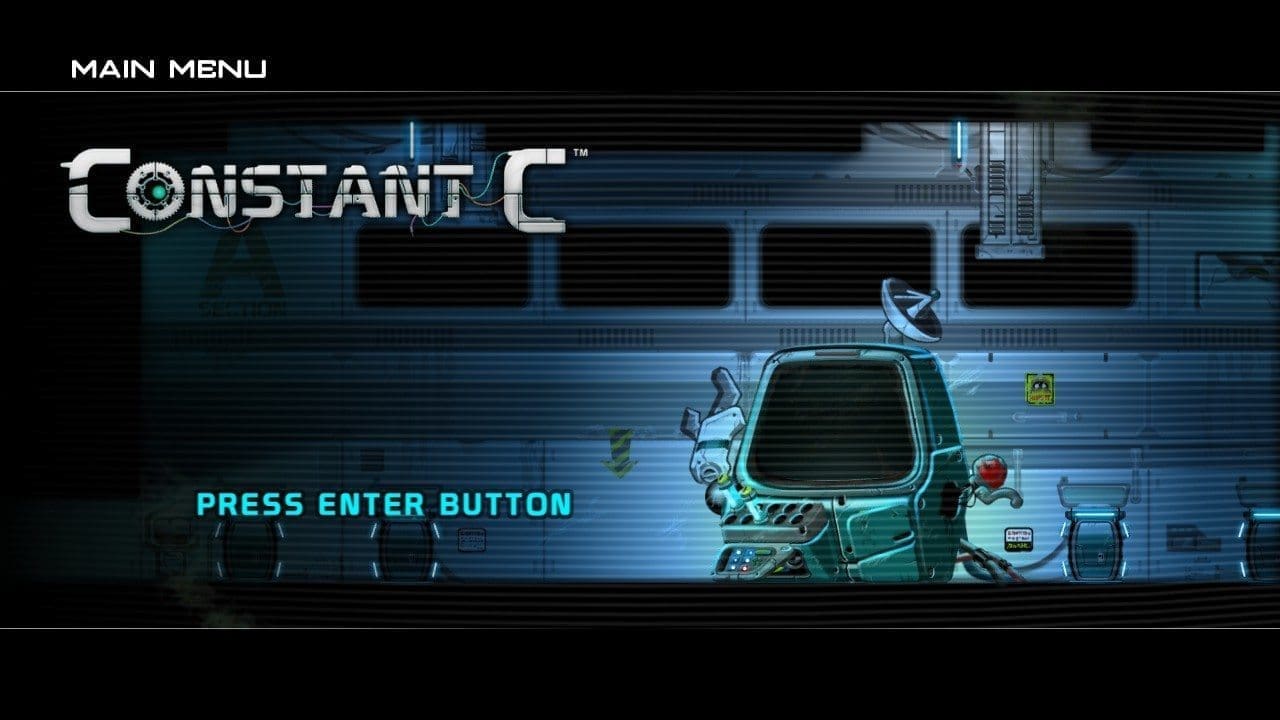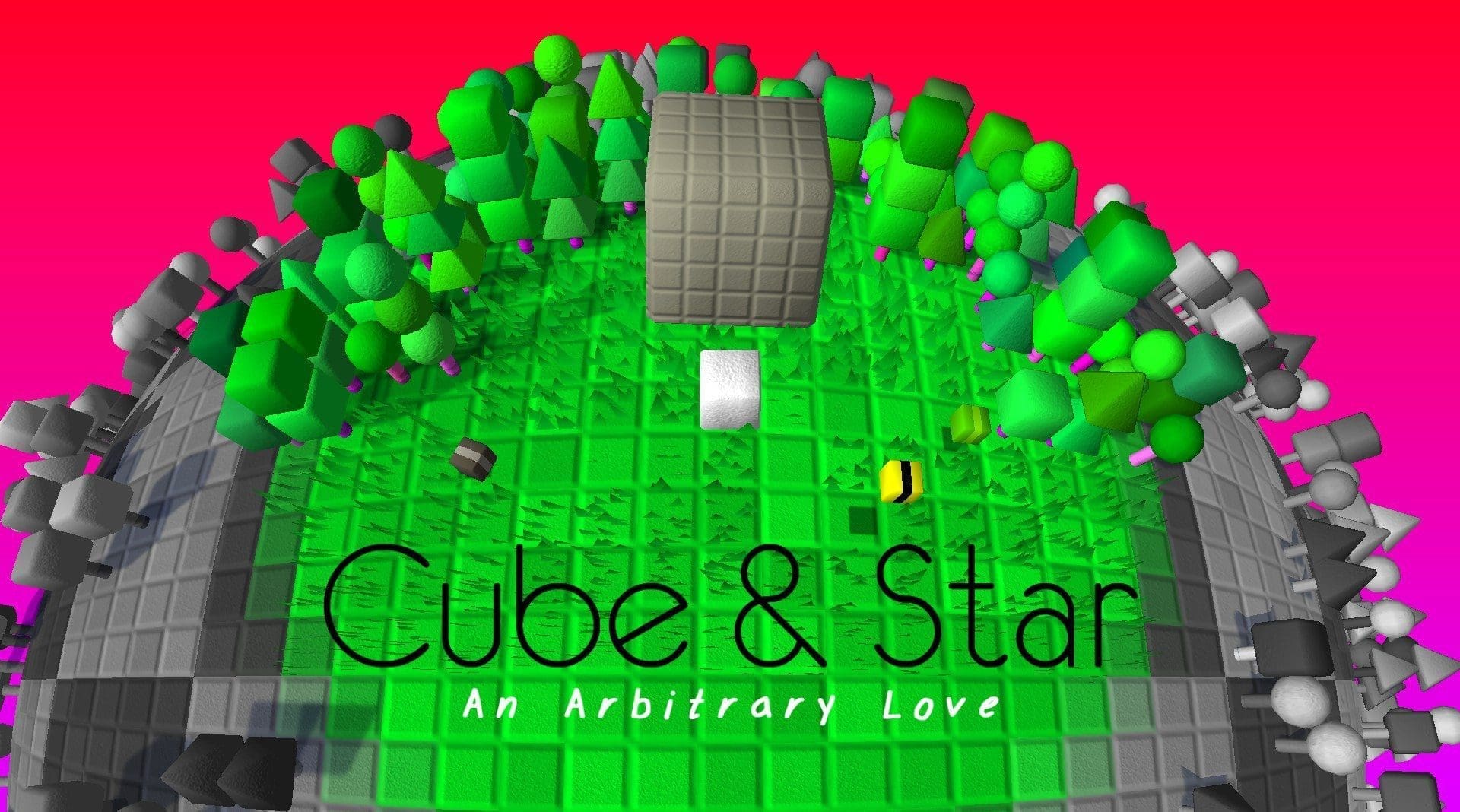
Cube & Star: An Arbitrary Love is a game about a cube on a quest to paint the world, I think. I’ll be honest, this is one of the most off-kilter games I think I’ve ever played. Normally this is where I give genres and comparable games, but I just can’t do that with this game. It’s unlike any other game I’ve ever played, for good or bad, and there is no quick way to describe it. It’s a casual, slow-paced game, which features mostly rolling a cube around and collecting items.
Gameplay
To give any good analysis on how the game plays, we have to first understand it. I’m not entirely sure that’s possible with this game, it’s just so unlike your standard fare of games, so instead I’ll attempt to explain the game. When you start, a computer-generated voice coming from a giant cube tells you to paint the world, and that’s about all the instruction you are given. As you roll around there are other cubes, spheres and tetrahedrons that inhabit the world that you can interact with. Most of them give vague statements about vague topics, and sometimes they give you a direction as well. I’ll be honest, I never really got anything from them from a mechanics perspective, but they do help to flesh out the world. The game gives you a set of goals in a checklist, which you will start to complete without realizing it, and in fact I’m still not 100% sure how I achieved most of the goals that I finished. There is also a large star somewhere on the map that gives comments about your progress, clearly leading up to something, but I didn’t have the patience to color in the entire world.
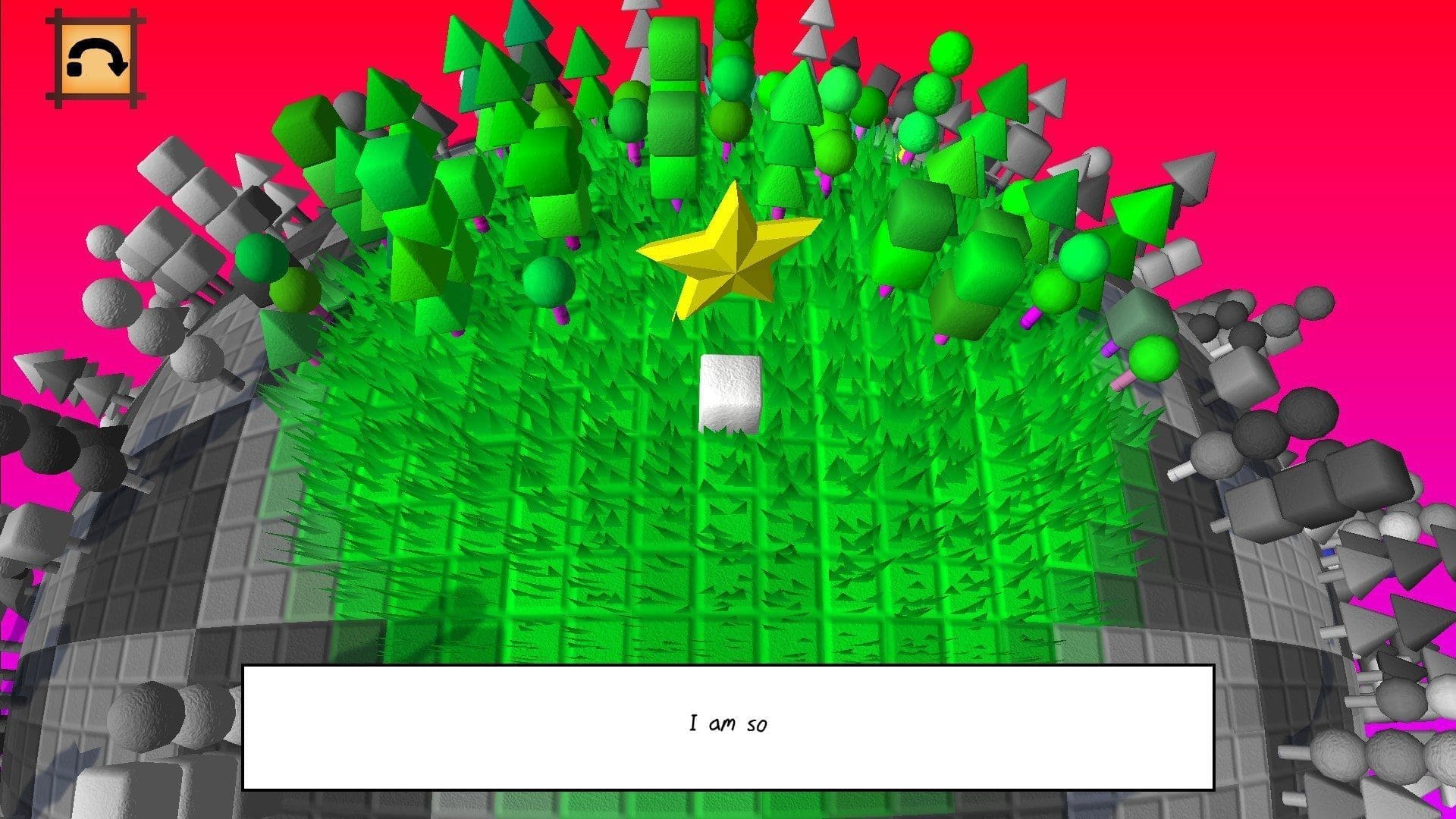
In your travels you will encounter areas of the map that are not in black and white, and hitting the trees in those areas drops fruit, which changes the color of your cube. When you cube is colored, you will paint the ground around you as you move. It functions essentially like a large image with a slow pen, dragging across the canvas changing colors in its wake. As you explore the world, certain tiles will cause items to appear when they are painted, most of which seem to do nothing but increment a collection counter. There are a few histories and other bits of text in some bizarre font that pop up from time to time, and that’s where the meat of the game lies.
The best part of the game for me was the lore, told through short snippets of text that you find in the ground. The standard set seems to be from the giant cube in the intro, and the other set, which you have to translate by means of a simple cipher, is from a population that he interacted with. These bits of text tell an interesting story, but there’s not a lot there to tell, and there’s a whole lot of rolling around picking up geometric-shape kabobs in between. As you paint the world and engage with its inhabitants, new creatures start to show up, and you gain the ability to send out paint orbs that create buildings as well as color in the map. It seems like the ultimate goal of the game is to cover the map with color, and that’s a long and tedious road if you’re just trying to “beat” it.

This style of gameplay isn’t for everyone. It’s very repetitive. If you are looking for an action game, or a game that you can really dig into this might not be your game. It seems to focus on presenting the player with a calm, relaxing experience, with a few game elements dangled in front at regular intervals to keep you going. The driving force behind the game seems to be the story, but you either have to want it enough to walk across a massive world in a methodical manner to ensure complete coverage, or just explore casually for a very long time to see it all. The game was clearly designed for the latter style of play, and in my few hours of alternating play styles, I managed to cover about 75% of the world in color.
Interface
The game has a simplistic design, with everything in the game world being a plainly textured geometric shape. This aesthetic extends to the interface as well. There is a constant set of icons that represent the action you can perform in the game, and when you collect an item it shows you your progress for all of the collectible items in the game. There is very little visual interface to get in the way of things, though there’s not exactly a lot going on that you need to respond to as the player that an interface could get in the way of. The style of the interface matches the style of the gameplay, and really that’s what matters.
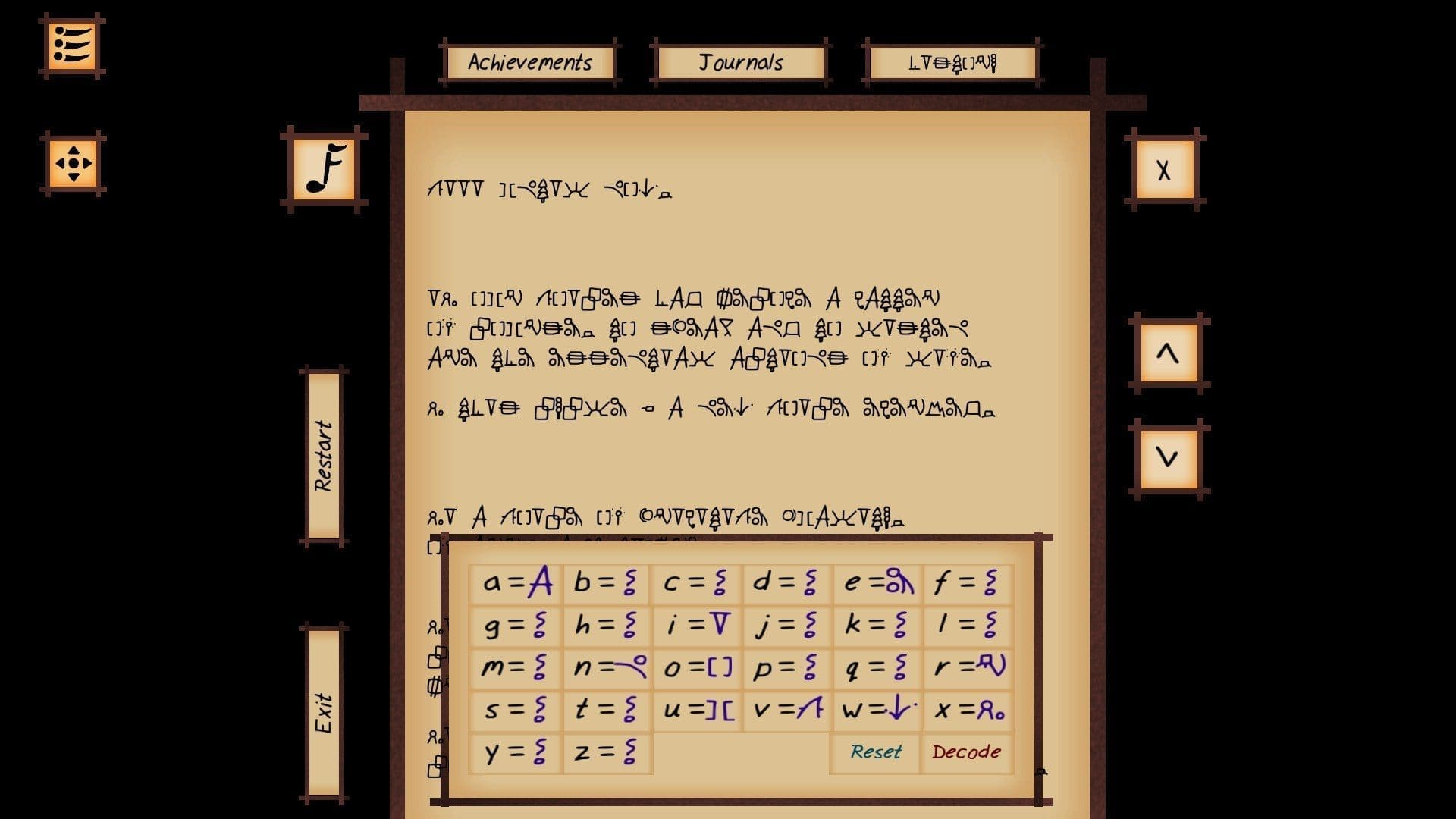
I don’t know if it’s because I have my gamepad plugged into my computer permanently or not, but the game seemed a little confused as to which input device it wanted me to use. Certain functions only worked through the gamepad, or else the game never told me what the keybinding for it was and none of the intuitive defaults for those functions seemed to work. Other functions only worked by clicking on the various buttons on the menus with the mouse. Switch back and forth was a bit of a hassle, but since the game is paced so slowly, it wasn’t really a detriment. Other than that the controls were fine, though there wasn’t exactly a plethora of actions to perform, so there was little input to actually give.
Visuals
The game’s aesthetic matches with the gameplay perfectly. It’s simple, it’s a bit bizarre, and it’s very relaxing. Initially the world is mostly gray, with patches of lighter and darker grays in a checkerboard pattern across the world. As you paint the world, the colors are mostly soft pastels, and the trees paint in contrasting colors to the ground. With their bright colors and plain shapes, they almost look like ice cream cones. The textures are soft and simple, nothing ever really jumps out, it’s all very relaxing to look at. It’s almost boring in its homogeneity, but there is enough going on that the simple shapes and soft palette don’t make for a boring scene. After three hours of the same scene it starts to get dull, but by that point the buildings that show up breathe just enough life back into it.
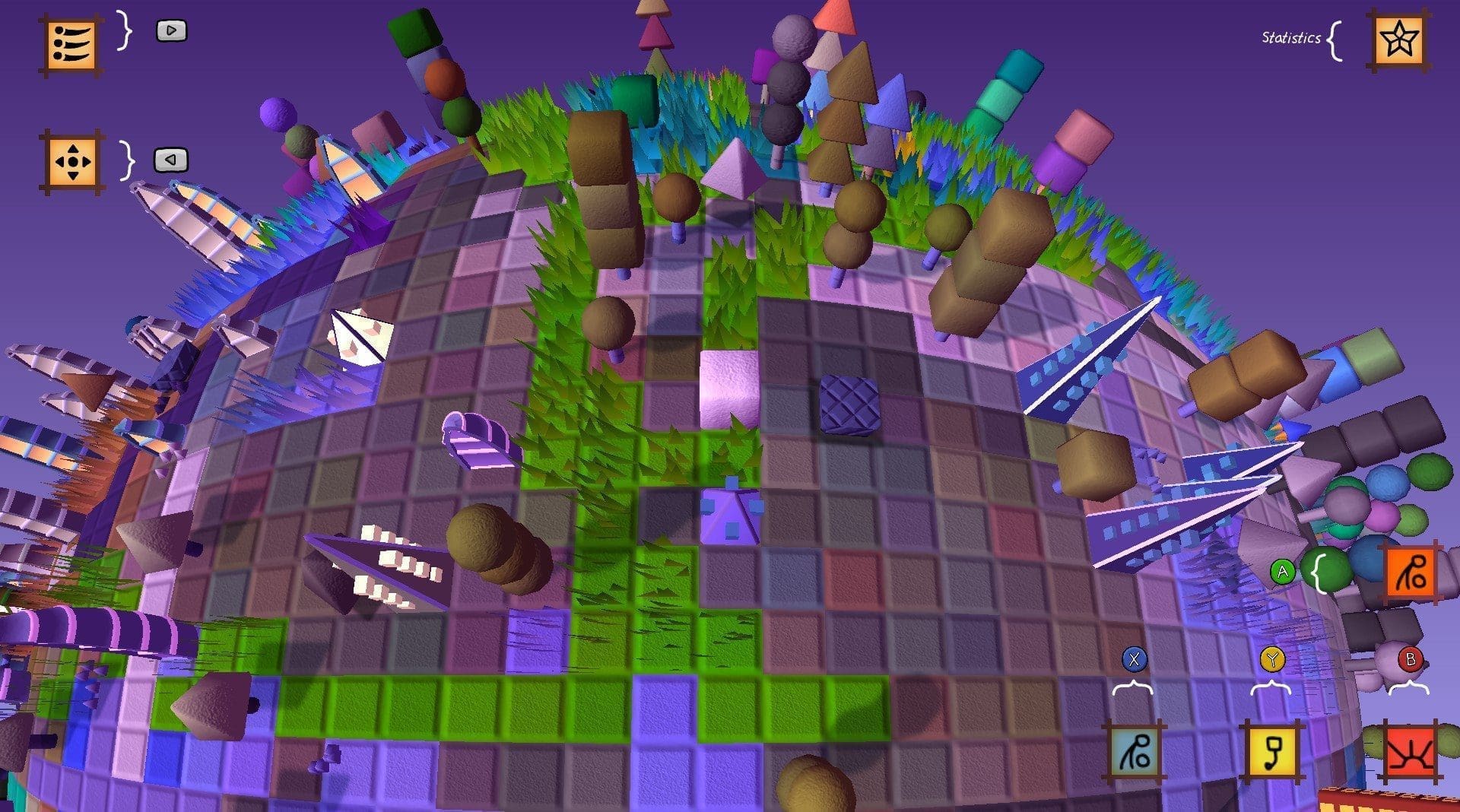
The world that the game takes place in is shaped in an interesting way. By interesting, I mean it defies the laws of physics. The world is shown to have a pretty sharp curve to it, and with the size of the area you can see at any given time, it should only take you a few seconds to circumnavigate it. This is a lie, and one that confused me a great deal when I first started, so don’t fall for it. The game world is much, much larger than it appears. The game also features a day and night cycle, though it doesn’t seem to have any effect other than making it hard to tell what’s been colored in and when your cube loses pigment. On the whole, it seems to strive to hit just enough visual complexity to stay on the good side of interesting, at no point are your senses in danger of being overwhelmed.
Audio
If you haven’t already picked up on it from the rest of the review, this game has a theme of minimalism. It should come as no surprise then that the audio tracks follow that same theme. There is no epic score heralding your cube as it brings color to the world, no fanfare or intense sound effects. The music is crafted to the same level of complexity as everything else in the game. A low driving bass line with minimal instrumentation over top runs on loop in the background the entire time you play the game. There is enough going on with the melody of the song that it takes a long time or a keen ear to pick up on the repetition, but that bass line just keeps pushing you on the entire time.
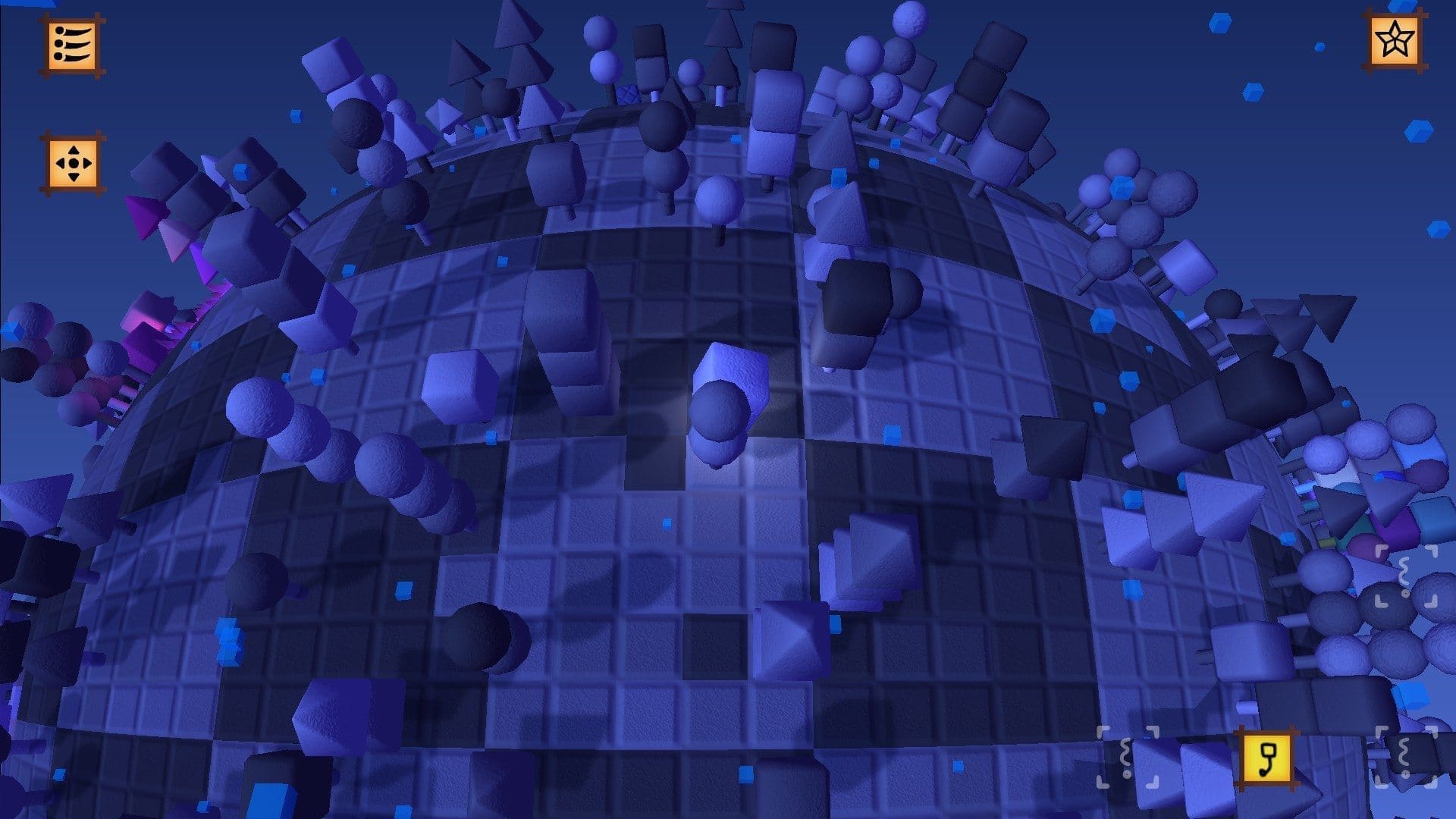
I have one complaint with the audio though, and this may be me being pedantic, but the tempo of the bass line that plays constantly in the background doesn’t match the speed that the cube rolls at. I doubt most players would even notice, but it’s something that once I picked up on it, I couldn’t ignore it for the rest of the time I played the game. The sound effects were fine, the music was good, there is really very little to complain about with the sound, but for everything else having been meticulously crafted to fit together so precisely, I would have expected the tempos to match as well.
Conclusion
Cube & Star: An Arbitrary Love is a different kind of game. If you are looking for a new gaming experience, this game will definitely deliver. If you favor more traditional styles of games, or lose interest in a game easily if it doesn’t work to hold your attention, then you will probably not enjoy this one. I wouldn’t be surprised if a large number of gamers wouldn’t even consider this a game, or upon finishing the game simply scratch their heads and ask themselves what on earth they just played. It might be better to advertise the game as a relaxation tool, an experience you can slip into and zone out while you splash color around the world. The game is $10, which as a game of its length and involvement seems a bit steep. If you are into buying artistic experiences though, that price is probably much closer to reasonable.
You can find more details over at the game’s website, http://www.cube-and-star.com/, and you can buy the game directly there, or pick it up on Steam.
[SlideDeck2 id=9271]
Ever since smashing my first goomba at four years old, I've been a video game fanatic. I grew up with games, and when the big studios started pumping out the same games over and over again, I turned my eye to where the real fun is. I haven't bought a game from a major publisher in years, and I want to share my love for the indie gaming community with you all. When I'm not playing or writing about indie games, I'm out there trying to make my own. Hit me up on twitter, @empyrealhell, for the latest look into this small but wonderful slice of gaming.


















